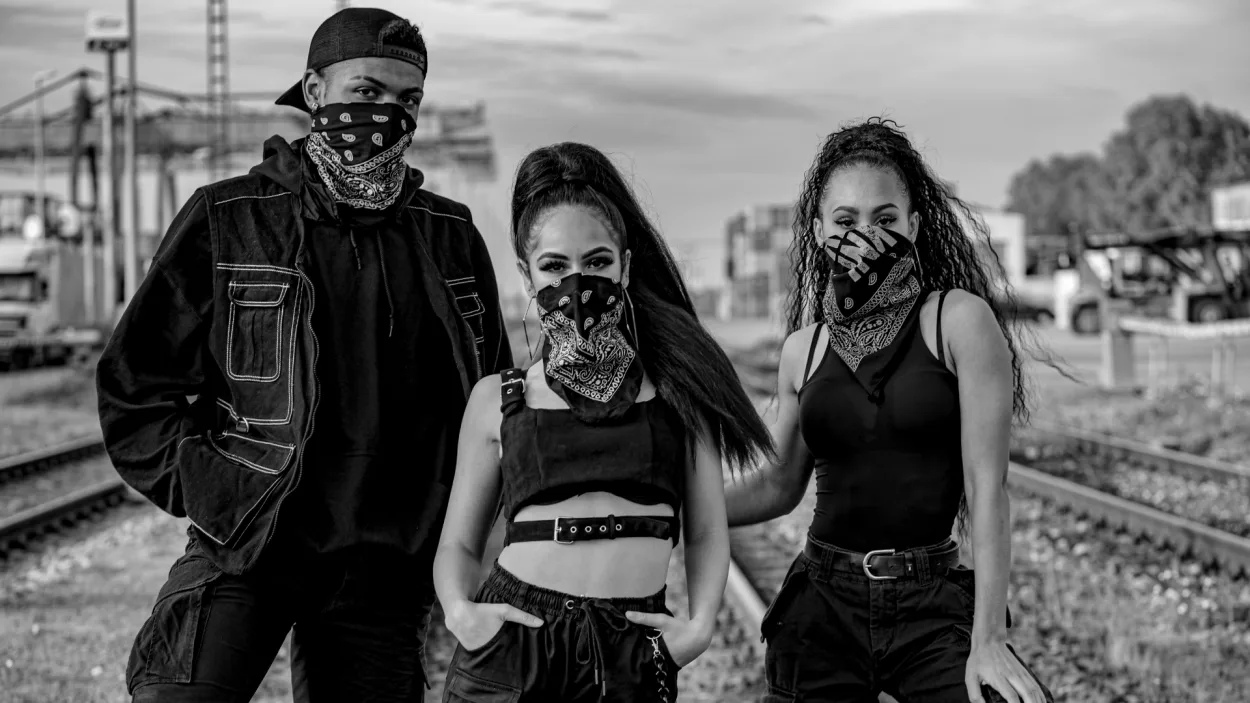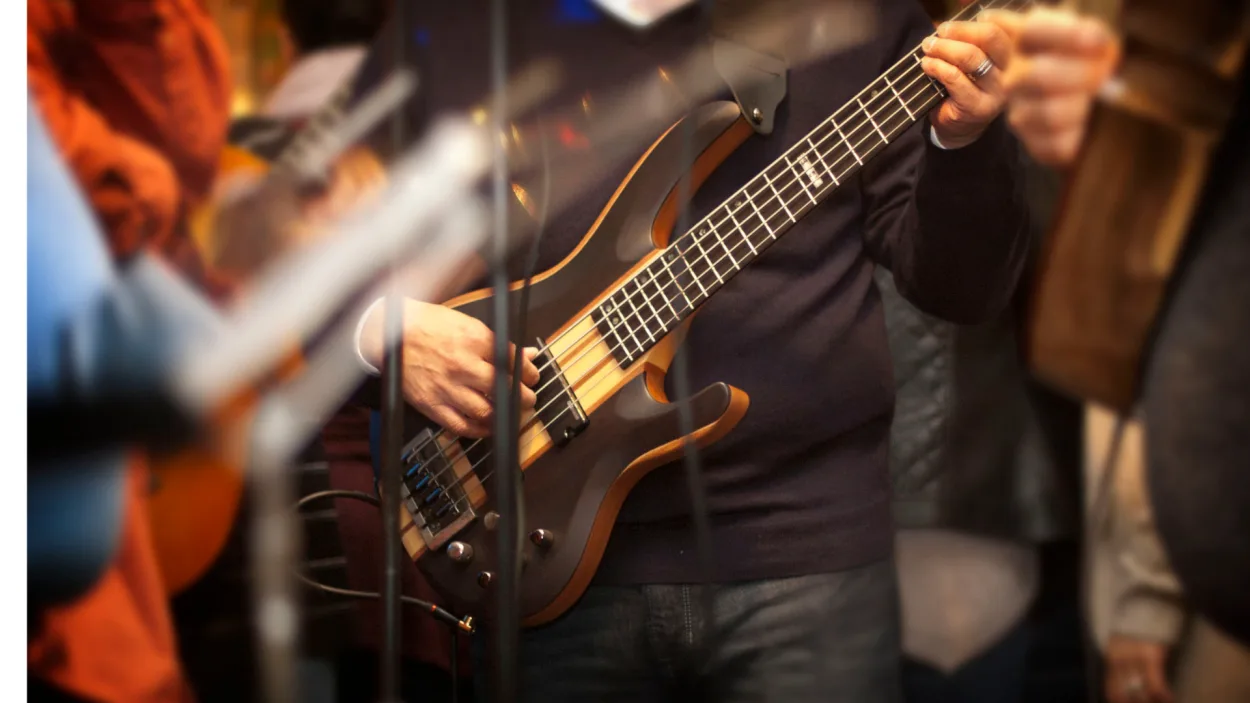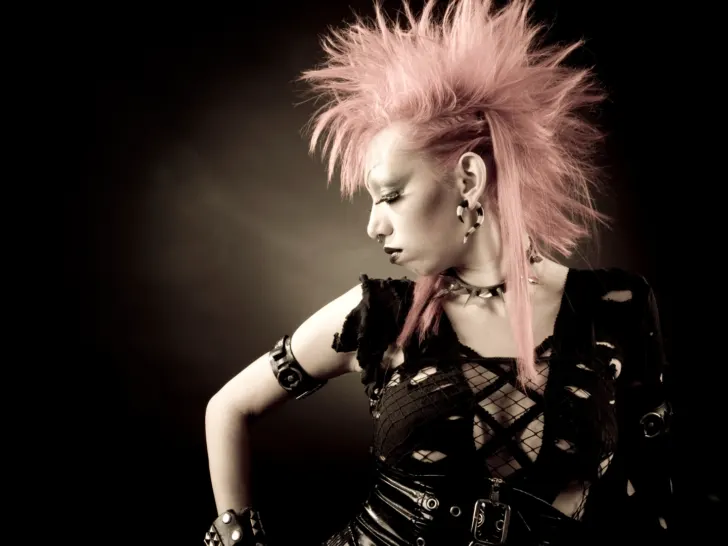In the eyes of the general public, the alternative scene might appear to be a perplexing combination of dark attire and loud music.
It might be difficult for outsiders to appreciate the intricacies that constitute each alternative subculture. While certain subcultures, such as pastel goth or rockabilly, have distinguishing characteristics that set them apart from the Goth umbrella, others, such as Emo, may be grouped in with a generic Goth word.
We can see why people might want to take a break from the mainstream. Emo might easily be misconstrued as a Goth going through a wild adolescent phase by people who aren’t intimately involved in the alternative scene. There are some parallels一 but if you look closely enough, you’ll see a lot of variances.
Goth and Emo have similar origins and are frequently defined as people who prefer dark clothes and other items that have nothing to do with horses or nice sentiments. Despite certain similarities, goths and emos are different subcultures with distinct personalities and fashion senses.
A goth is someone who listens to gothic music and dresses in a gothic manner (usually black and edgy clothes). Emo is a subculture that arose due to the popularity of goth culture.
Let’s look at some un-nuanced descriptions of what Goth and Emo imply, look like, and sound like at their core before we get into similarities and parallels.
Defining Goth
We’re sure many of the goths we’re talking about think this tribe is full of badasses, but when we say Goth, we’re talking about the music and fashion subculture.

Whatever your Google says you, goth in this context has nothing to do with the Germanic tribe who attacked the Roman Empire — thanks for trying, Urban Dictionary and Merriam-Webster.
In this sense, a goth is someone who listens to gothic music and dresses in a gothic manner (from Bauhaus to Marilyn Manson) (black, black, Victorian-influenced, black, punk-influenced, black).
Goth, or gothic culture, is a modern subculture of people who dress in black (typically period-styled) costumes, have dyed jet black hair, thick eyeliners, and black fingernails. Goths typically dress in Victorian, punk, and deathrock fashions, with pale facial makeup.
While most goths like gothic rock, they are known to enjoy a variety of musical styles. The goth subculture has inspired musical forms such as industrial, deathrock, neoclassical, ethereal wave, and darkwave, in addition to gothic rock.
The goth subculture has its origins in the early 1980s in England, when the gothic rock scene arose from the post-punk movement. Post-punk bands like Joy Division, Bauhaus, and Siouxsie and the Banshees were regarded as forerunners of the goth trend.
Gothic culture and images were also influenced by horror films, vampire culture, and 19th-century Gothic literature. Many of its contemporaries have died out, yet the goth movement continues to draw big crowds. Germany, for example, hosts big goth festivities once a year.
Goths don’t appreciate it when they’re confused for emo.
Still confused? No worries, I got you a video that debunks all your known myths about the goth culture. Check this one out.
Emo: What’s the definition?

Emo was one such subculture that arose as a result of goth’s popularity. The music, which lays a strong focus on emotional lyrics, expressive imagery, and a confessional tone, is essentially what defines emo.
It’s no surprise that the emo charge was mostly driven by a younger audience coping with the sentiments that emo music represented since it reads like a tormented journal of a teenager.
Emo fashion drew inspiration from gothic fashion but pushed it into a more mainstream streetwear style that plays into the concept of ‘geek chic’ – typically geeky t-shirts were paired with v-neck jumpers and tighter-than-tight skinny jeans, with glasses, black dyed hair, and super-long side fringe also ranking as emo must-haves.
Emo: A controversial culture
This depressive culture had glamorized self-harm and suicide—resulting in a major public relations dilemma.
In an attempt to disassociate themselves from emo culture’s darker parts and media bias, bands that would ordinarily be labeled as emo fought against the moniker.
Emo became stigmatized as a result of this connotation, and many individuals lost interest in a subculture that had previously generated a strong sense of community—notably on online platforms like MySpace.
Emo and Goth—do they fall under the same umbrella?
No. While there are many parallels between the two owing to emo’s beginnings in gothic culture, there are also significant differences that distinguish emo as a distinct alternative subculture in its own right—even though they both belong under the ‘alternative’ banner.
Emo is sometimes dismissed by critics as a phase or trend, but goths perceive their subculture as a way of life. Goth also conjures up images of terror and religion. Emo was once linked to suicide, self-harm, and societal rejection, all of which emo musicians refute.
Let’s deep dive into their significant similarities.
The following are some of the significant parallels between goth and emo:
- Romantic themes
Their songs both deal with themes of romance such as unrequited love, and both speak reverently about the object of their emotions, making their infatuation appear otherworldly or unreachable.
- Black-based fashion and music
Both of them include a lot of black in their color palettes. However, goth clothing takes this to the extreme, whereas emo clothing encourages vibrant colors like red, purple, and green to be worn on a black basis.
- The dramatic style of makeup
Both employ eyeliner and other strong makeup looks to achieve their styles. Goth makeup, like goth apparel, is predominantly black and white, whereas emo makeup is more colorful.
- Relationship with death

You might think that it sounds creepy or scary but, goth and emo have an unjustified reputation in the media for encouraging violence and glamorizing death, yet even this association with death has significant subtleties. Emo was accused of encouraging self-injury, whereas goth was blamed for encouraging others to hurt themselves.
Goth vs. Emo: Key Differences
To give you an overview of how these can be easily distinguished—take a look at this table.
| Goth | Emo |
| Part of the post-punk movement in England in the early 1980s | Originated from hardcore punk in the mid-1980s |
| Linked to horror, religious or occult imagery, and free thought | Associated with heavy emotions, rage, and self-harm |
| Black hair, light makeup, black outfit, and silver jewelry | Tight t-shirts, black wristbands, and slim pants, with short, layered black hair with colorful highlights |
How do we tell if someone is a Goth?
It’s been called spooky, odd, complicated, and foreign.
Gothic fashion is a dark, sometimes gruesome trend and style of dress that consists of dyed black hair and black period-style clothing.
Both male and female goths can use heavy eyeliner and dark fingernail polish, preferably black.
Do Emo’s have a personality type?

What exactly is an emo person if not someone who listens to emo bands?
There is no one way to be an emo, yet there are certain emo personality traits that are common.
Here are a few examples:
- Shyness and introversion
- Creativity and creative impulses, such as writing sad poetry and drawing terrifying images, are desired
- Feeling perplexed or angsty
- an aversion to “popular” music, movies, or other kinds of art
Going to emo band events, spending time alone, and discussing feelings, music, and the like in online groups such as MySpace are other stereotypical emo practices. Remember that emo as a subculture arose with emo music; it seems to reason that members of the subculture would gravitate toward music that mirrored their sentiments and sensibility.
As members of the subculture began to make their own music, they propelled the genre forward. Both sides fed off of one other.
Final Thoughts
They differ in terms of cultural influences and expression.
Emotions are expressed via poetry and music. They also produce post-punk and punk philosophy-based criticisms. Goth, on the other hand, has a subculture associated with black magic, vampires, and witches, and their way of thinking is more inclined toward the nature of death, fiction, and imagination.
Isn’t it easy to tell one from the other now that you know the main similarities and distinctions between emo and goth?
Other Articles
- For ten-year-olds, Democrats vs. Republicans
- Programming vs. Programing- (Grammar and usage)
- What Is The Difference Between An EMT And A Rigid Conduit?
- What’s the Difference Between Null and Nullptr in C++? (Detailed)
- 1-way-road and a 2-way-road-What’s the difference?
The shortened version of this article about goths and emo can be found when you click here.

